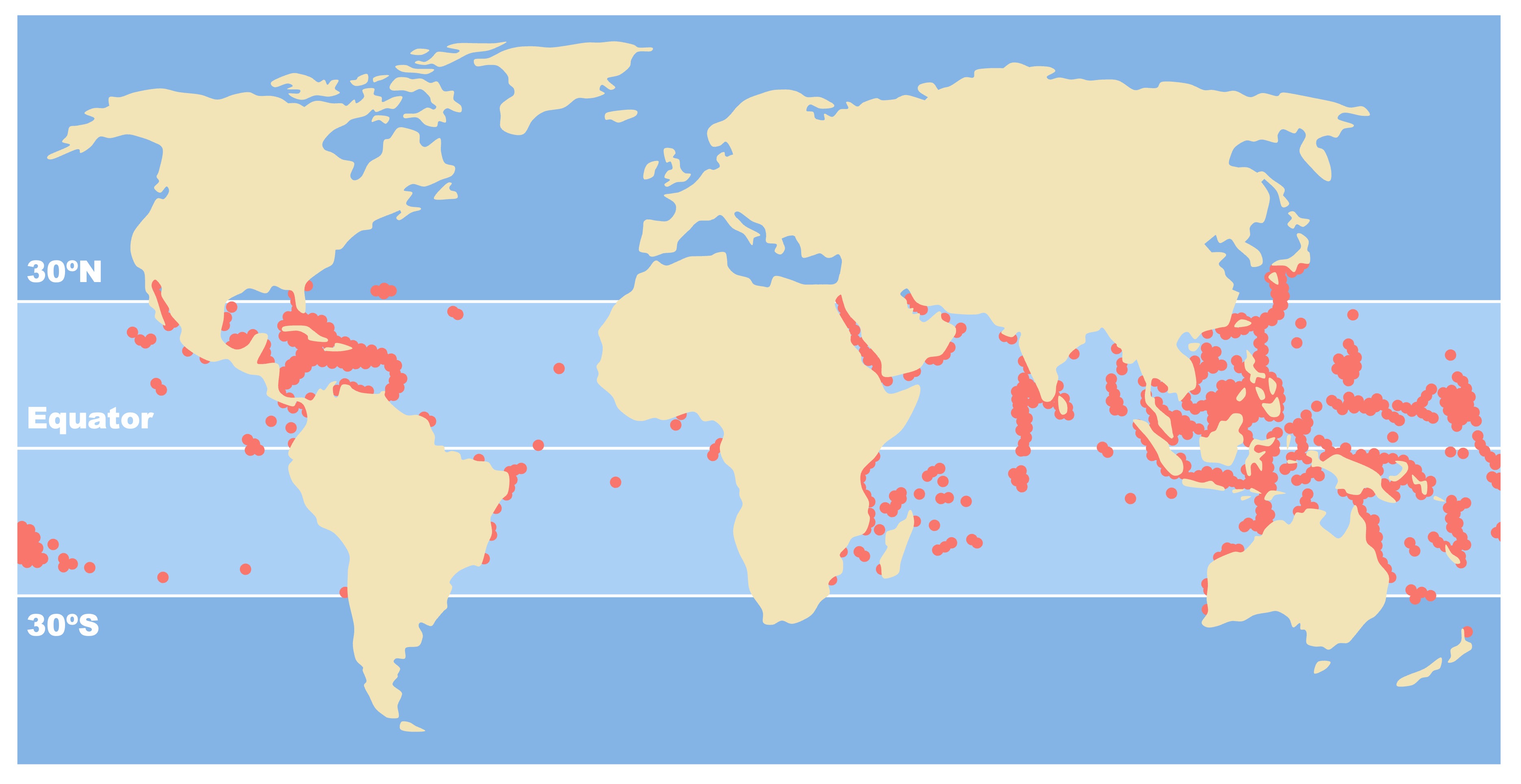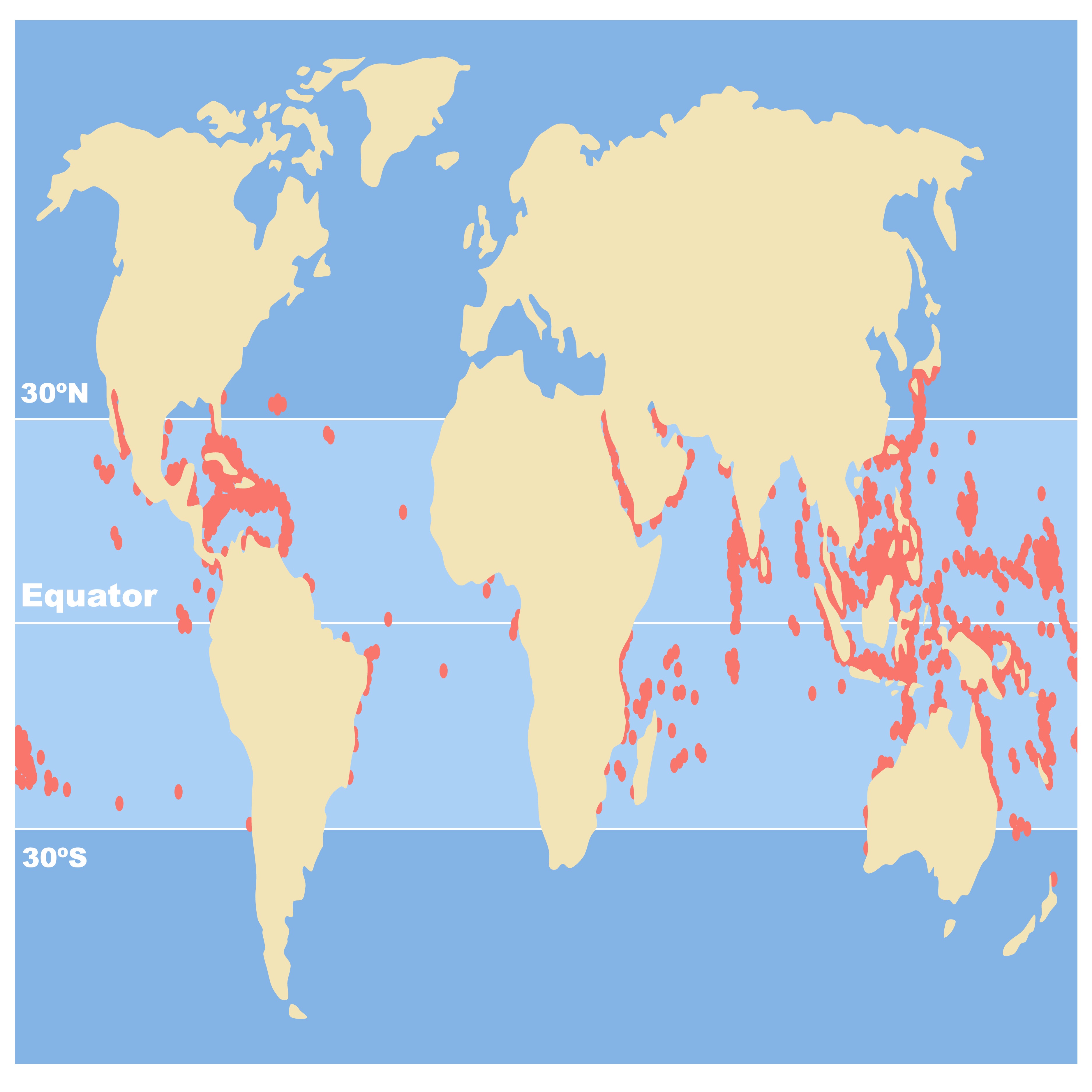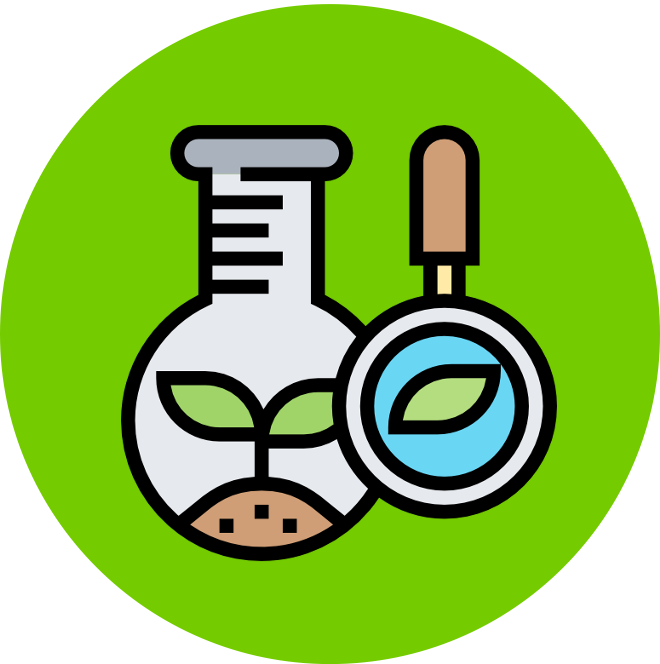

Coral Reefs
Coral reefs are an example of a marine ecosystem whereby the distribution is determined by abiotic conditions
-
The distribution of reef-building coral is limited to the tropics and sub-tropics (although other coral species can be found outside this range)
Reef-building coral exist in a symbiotic relationship with the photosynthetic unicellular algae called zooxanthellae
-
The coral polyps provides the algae with a protective environment and a source of inorganic compounds (CO2)
-
The zooxanthellae supplies the coral with oxygen, glucose and other organic molecules (produced via photosynthesis)
This symbiotic relationship can only occur under certain abiotic conditions (a change to these conditions may lead to coral bleaching)
-
Water depth – Coral can only survive at shallow depths where sufficient light can penetrate for the algae to photosynthesise
-
pH – Low pH conditions reduce the availability of carbonate ions the coral needs to build their calcium carbonate exoskeletons
-
Salinity – Coral are a marine organism and need a certain concentration of salt to survive (freshwater runoffs can limit coral growth)
-
Water clarity – Water must be clear enough for light to penetrate (water pollution can reduce clarity and limit growth)
-
Temperature – Coral have a range of tolerance of roughly 20 – 28ºC (higher temperatures may cause polyps to expel their algae)
Coral Reef Distribution






